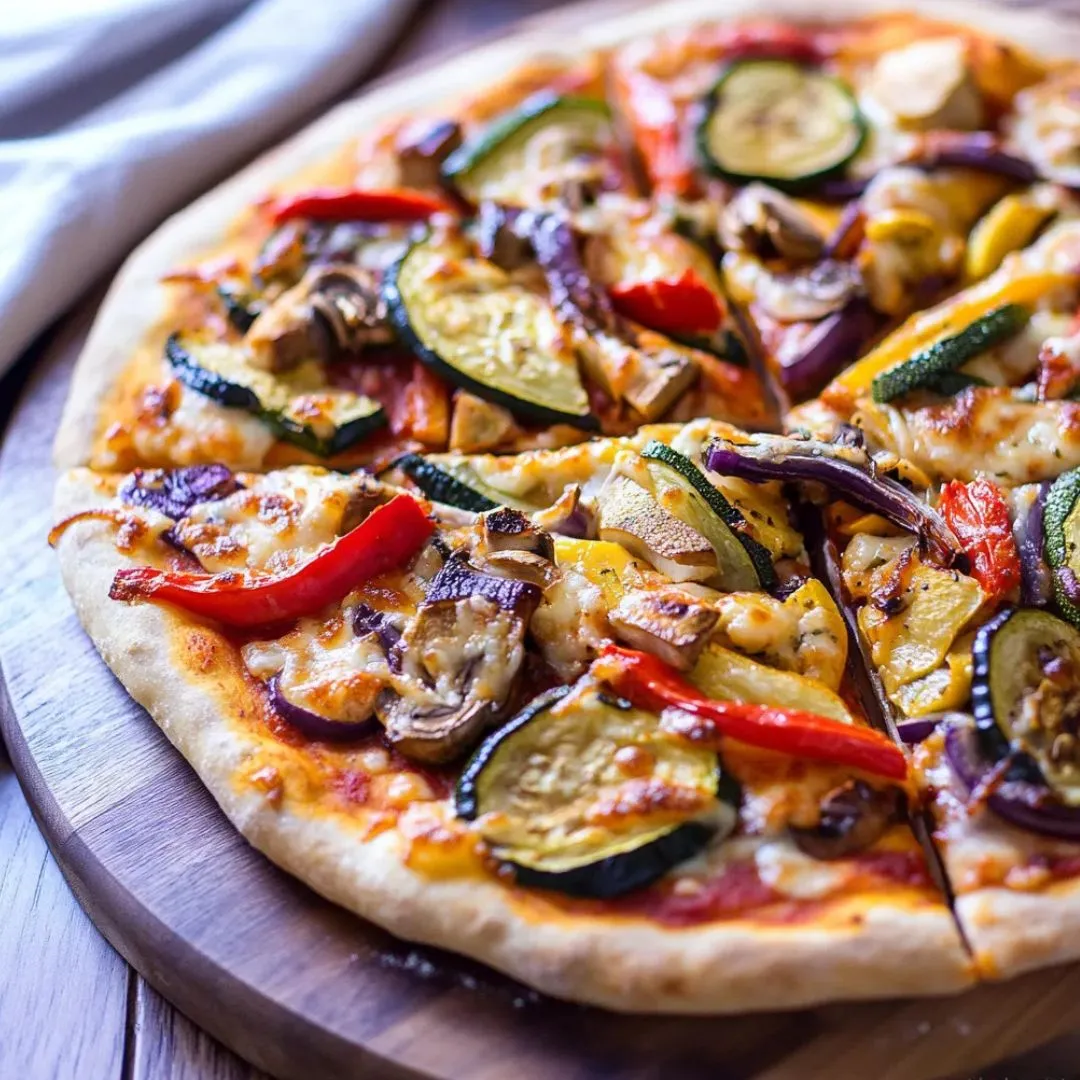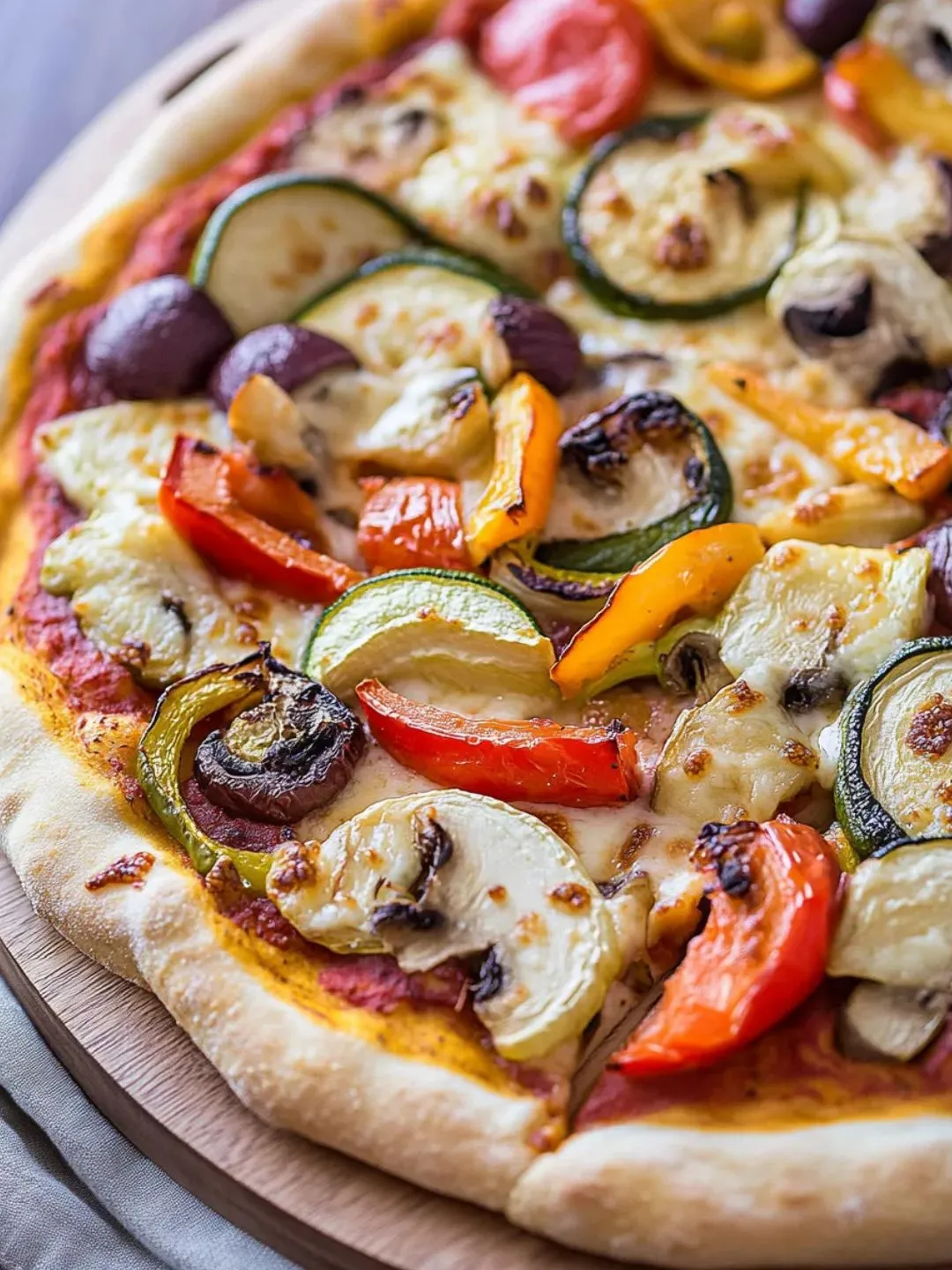 Save
Save
This roasted vegetable pizza combines the irresistible comfort of homemade pizza with the goodness of roasted vegetables and sharp cheddar cheese. The slow roasting process caramelizes the veggies, bringing out their natural sweetness while the sharp cheddar adds a rich, tangy flavor that perfectly complements the marinara base.
I developed this recipe during a particularly busy week when I needed to use up vegetables before they spoiled. What started as a practical solution turned into our family's Friday night tradition, with everyone gathering in the kitchen to personalize their section of the pizza.
Ingredients
- Pizza dough store bought or homemade provides the perfect foundation for our toppings
- Olive oil helps create a crispy crust and adds richness to the roasted vegetables
- Oregano brings classic Italian flavor that enhances the sauce and cheese
- Marinara sauce use your favorite brand or homemade for best results
- Sargento Sharp Shredded Cheese offers excellent meltability with bold flavor that stands up to the vegetables
- Fresh tomato slices add juicy brightness that balances the roasted vegetables
- Leeks provide a milder, sweeter onion flavor that caramelizes beautifully
- Crimini mushrooms contribute earthy umami notes and meaty texture
- Cauliflower florets become nutty and sweet when roasted
- Zucchini adds moisture and a tender bite
- Bell peppers bring natural sweetness and vibrant color
- Salt and pepper essential for enhancing the natural flavors of the vegetables
Step-by-Step Instructions
- Roast the Vegetables
- Preheat your oven to 400 degrees and line a large baking dish with foil for easy cleanup. Combine all your prepped vegetables in the dish, drizzling with olive oil and seasoning generously with salt and pepper. Toss until every piece is lightly coated. Roast for 20 25 minutes, stirring halfway through, until vegetables are tender and developing golden brown edges. The caramelization is crucial for developing deep flavor.
- Prepare the Pizza Base
- Take your pizza dough and roll it out to approximately 12 inches in diameter, working from the center outward. Transfer the dough to a pizza stone or round baking sheet. Brush the entire surface liberally with olive oil, making sure to reach the edges this creates a moisture barrier that prevents the sauce from making the crust soggy. Sprinkle the oregano evenly across the oiled surface.
- Assemble the Pizza
- Spread your marinara sauce in a thin, even layer across the dough, leaving a half inch border for the crust. The amount is personal preference, but remember that too much sauce can make the pizza soggy. Distribute the Sargento Sharp Shredded Cheese evenly across the sauce. Arrange your roasted vegetables on top of the cheese layer, distributing them evenly. Finally, place the fresh tomato slices decoratively on top.
- Bake to Perfection
- Keep your oven at 400 degrees and place the assembled pizza on the middle rack. Bake for exactly 20 minutes, watching closely during the final few minutes. The pizza is done when the crust has turned a beautiful golden brown color, the cheese is completely melted and beginning to bubble, and the edges of some vegetables are getting additional caramelization.

My absolute favorite component is the roasted cauliflower. I was skeptical the first time I included it, but it transforms completely in the oven, developing a nutty sweetness that makes it nearly unrecognizable from its raw state. My daughter now specifically requests extra cauliflower on her portion which feels like a parenting victory.
Making Ahead Options
This pizza has several make ahead opportunities that make weeknight cooking easier. The vegetables can be roasted up to three days in advance and stored in an airtight container in the refrigerator. You can even assemble the entire pizza earlier in the day and keep it refrigerated until ready to bake just add an extra 2 3 minutes to the baking time if starting from cold. The pizza dough can also be prepared ahead and stored in the refrigerator for slow fermentation, which actually improves flavor.
Seasonal Variations
While this recipe specifies certain vegetables, the beauty lies in its adaptability to seasonal produce. In summer, add thinly sliced eggplant, sweet corn kernels, and fresh basil after baking. Fall brings opportunities for butternut squash, thinly sliced Brussels sprouts, and sage. Winter calls for hearty root vegetables like sweet potato, parsnip, and rosemary. Spring shines with asparagus tips, peas, and fresh mint added after baking. The cheese remains constant, providing familiar comfort through seasonal changes.
Serving Suggestions
This pizza pairs wonderfully with a simple arugula salad dressed with lemon juice and olive oil the peppery greens provide a fresh contrast to the rich pizza. For a festive gathering, cut the pizza into small squares and serve as an appetizer alongside a cheese board. A crisp white wine like Pinot Grigio or Sauvignon Blanc complements the vegetables beautifully, while a light lager works well for beer enthusiasts.

Recipe FAQs
- → Can I use different vegetables for this pizza?
Absolutely! While this pizza uses leeks, mushrooms, cauliflower, zucchini, and bell peppers, you can substitute with any vegetables you prefer. Eggplant, broccoli, onions, or artichokes would all work wonderfully. Just make sure to roast them until golden brown before adding to your pizza.
- → Can I use a different type of cheese?
Yes, you can substitute the sharp cheddar with mozzarella, provolone, gouda, or a blend of your favorite cheeses. Each cheese will bring a different flavor profile to your pizza.
- → How can I make my crust crispier?
For a crispier crust, preheat your pizza stone or baking sheet in the oven before placing the dough on it. You can also bake the crust with just olive oil and oregano for 5 minutes before adding toppings.
- → Can I prepare the roasted vegetables ahead of time?
Yes, the vegetables can be roasted up to 2 days in advance and stored in an airtight container in the refrigerator. This is a great time-saver for meal prep.
- → Is there a gluten-free option for this pizza?
You can substitute regular pizza dough with a gluten-free alternative. Many grocery stores carry pre-made gluten-free pizza dough, or you can make your own using gluten-free flour.
- → How do I prevent my pizza from getting soggy?
To prevent sogginess, don't overload with sauce, use pre-roasted vegetables to reduce moisture, and ensure your oven is fully preheated. A pizza stone can also help create a crispy bottom crust.
